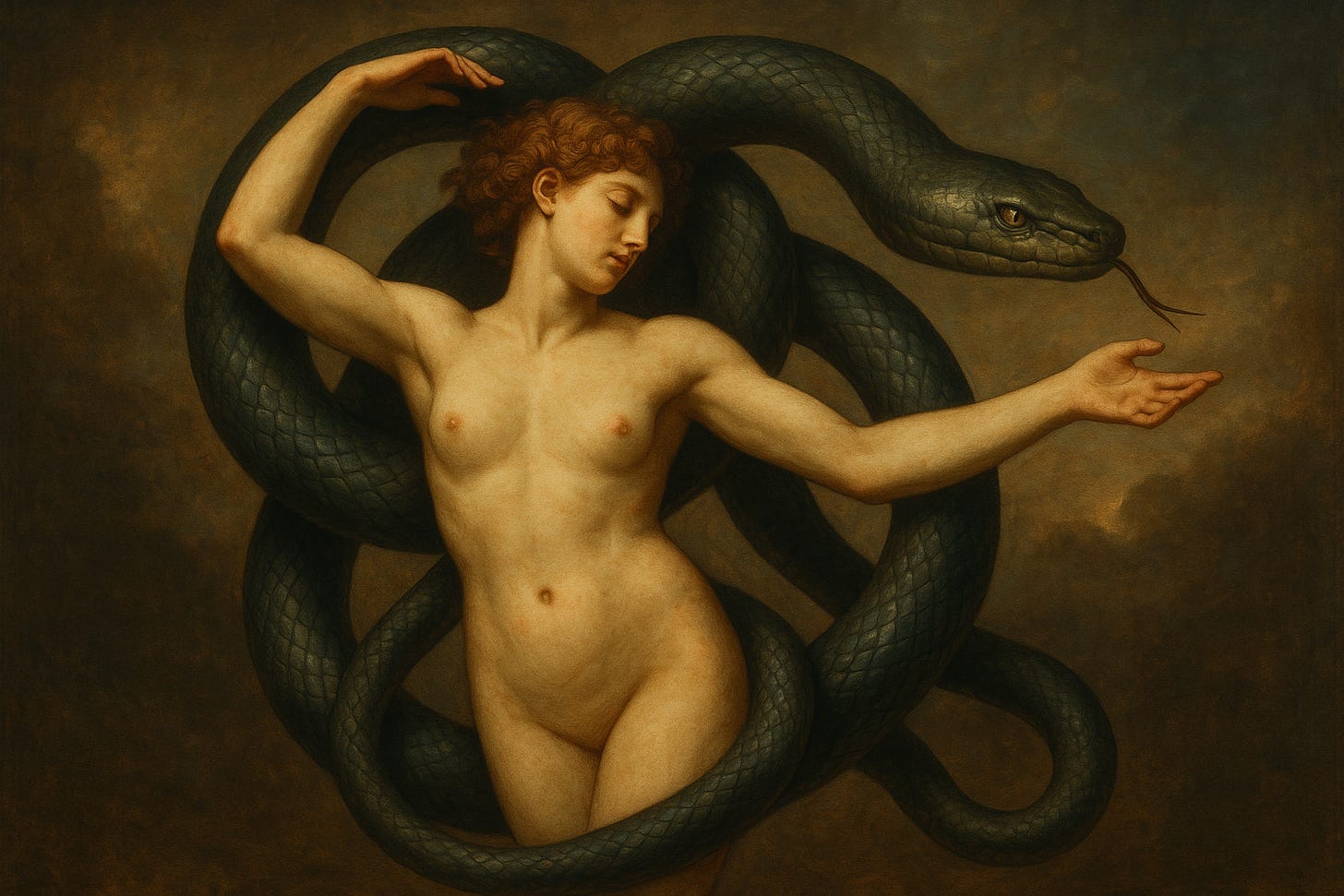Field Notes: The Serpent, the Spherical Human, and the Androgyne
"These spherical humans were whole. Too whole. They threatened the gods..."
In the beginning, before Yahweh turned the serpent into a villain, before patriarchs broke the world into male and female, there was the androgynous principle — whole, coiled, self-creating.
The serpent embodied this. Not male, not female, but both. It shed its skin, it renewed itself, it circled eternity by swallowing its own tail. This was life itself, the vital principle. For seven thousand years before Genesis was written, Levantine cultures revered the serpent as wisdom and renewal.
Then came the Yahwist inversion. The serpent became Satan. The emancipator became the corrupter. The androgyne was split apart.
But the old stories didn’t vanish.
Plato — of all people — preserved one in the Symposium. Aristophanes tells us the most ancient humans were spherical beings: four arms, four legs, two faces. Three types: male-male, female-female, and male-female (the androgynes). They rolled like tumblers when they wanted to move quickly.
These spherical humans were whole. Too whole. They threatened the gods. So Zeus cut them in half. From then on, each half went stumbling through the world, yearning for its lost other. Love, Plato says, is the hunger for wholeness.
It reads like speculative fiction, but it encodes something older. A memory, maybe, or a shaman’s vision.
The real question: why imagine androgyny at all?
Ancient people knew well enough that men and women made children. They saw sexual difference every day. So what prompted this archetype of the both-in-one?
Nature itself: hermaphroditic plants and animals, fish that change sex, worms with dual organs. The ancients were closer to the soil than we are. They saw life didn’t always split neatly into two.
Symbolic completeness: male = active, female = receptive. Together = totality. To imagine a being that is both is to imagine a god.
Shamanic experience: in altered states, the boundaries blur. The ecstatic becomes both man and woman. Beyond sex. Beyond category.
Cosmic unity: myths begin with wholeness before division. The androgyne embodies that primordial state.
The serpent, DNA, the spherical human: all three are codes of life’s double nature.
Romantic Satanists — Blake, Byron, Shelley — picked up the broken thread. They cast the serpent-Satan as emancipator, the rebel who restores vitality against Yahweh’s tyranny. Alchemists had already pictured the Rebis, the androgyne crowned, male and female joined, symbol of completion.
And today? The archetype returns in strange guises. Trans identities, transhumanist dreams, cybernetic bodies. A yearning not to be fixed in one sex, one form, one definition. A desire to roll again like Plato’s tumblers, whole and unbounded.
Field Note: The serpent is DNA. The androgyne is code before the split. Plato’s rolling humans are our distant mythic memory of wholeness. Every act of rebellion — from Satan to the transhumanist hacker — is an attempt to stitch back together what Zeus cut apart.
To become whole again. To become serpent. To become sphere.



Old Zeus, and his jealous Eloheem counterpart, afraid of what IS for sure.